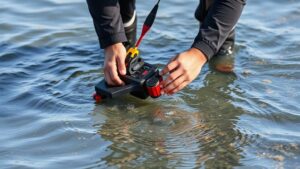Techniques for Detecting Hidden Treasures in Abandoned Taverns
Techniques for Detecting Hidden Treasures in Abandoned Taverns
Abandoned taverns, often rich with history, can also be treasure troves for those skilled in the art of detection. The idea of unearthing hidden treasures, whether monetary or historical artifacts, is alluring to many adventurers and treasure hunters. This article delves into advanced techniques and methodologies to locate hidden treasures within these forgotten establishments, equipping prospective seekers with the tools they need to maximize their findings.
Understanding the Historical Context
Before delving into treasure detection techniques, it is crucial to understand the historical context of the tavern in question. Many taverns served as community hubs where transactions occurred, making them potential stashes for valuables long forgotten. Historical records, local lore, and urban archaeology can illuminate the past, providing insights into what types of treasures might be found. For example, many taverns in the United States were hotspots during the Gold Rush, and historical records may indicate the existence of hidden stashes.
Researching Locations
Effective research lays the groundwork for successful treasure hunting. Here are several essential strategies:
- Local Archives and Libraries: Exploring local archives can provide historical maps and records of taverns that may include details about patrons and their possessions.
- Online Resources: Digital platforms and dedicated forums focused on local history and treasure hunting can yield valuable insights and leads.
- Networking with Enthusiasts: Joining local historical societies or treasure hunting groups enables knowledge sharing and often uncovers significant leads.
As a case study, the quest to uncover the hidden treasures of the famed Mason-Dixon Tavern involved meticulous research through city archives that revealed a series of thefts known to have occurred during its operation, indicating potential locations for concealed items.
Utilizing Metal Detectors
One of the most popular tools in locating hidden treasures is the metal detector. These devices can identify metallic objects buried beneath layers of sediment. Here are key considerations:
- Choosing the Right Detector: Select a high-quality detector with adjustable sensitivity and discrimination settings, allowing you to filter out unwanted metal types.
- Optimal Search Patterns: Employ systematic search patterns such as grid or spiral methods to ensure thorough coverage of the area.
- Depth Assessment: Be aware that older coins and artifacts can sometimes be buried deeper due to soil erosion and sediment buildup over time.
For example, during a search of a dilapidated tavern in New England, a treasure hunter uncovered a cache of colonial coins buried under a floorboard, thanks to a high-end metal detector with depth capabilities.
Investigating Structural Features
Understanding the architecture of abandoned taverns is essential to effective treasure hunting. Many taverns built in the 18th and 19th centuries contained hidden compartments and specially designed storage areas:
- Hidden Cellars: Cellars were common in taverns for storing goods. Look for trap doors or unusual structural modifications.
- Wall Cavities: Walls may have been built with hidden pockets. Using a stud finder or carefully probing can reveal hidden spaces.
- Furniture and Fixtures: Antiquated furniture or fixtures might conceal hidden compartments; it is worth inspecting old desks and cabinets.
A notable example includes the discovery of concealed whiskey barrels within the walls of an abandoned tavern in Virginia, which had been sealed since Prohibition.
Employing Ground Penetrating Radar (GPR)
For more advanced treasure hunting, Ground Penetrating Radar (GPR) is a non-invasive method to examine subsurface features. GPR uses radar pulses to image underground structures:
- High Resolution Imaging: GPR provides detailed images that can help identify voids, buried treasures, or structural anomalies beneath the surface.
- Cost Considerations: Although it requires an investment, hiring professionals who use GPR can drastically enhance your chances of finding significant treasures.
- Preparation and Safety: Ensure proper permits are obtained and safety procedures are followed during the GPR survey.
A successful use of GPR occurred at the site of a long-abandoned tavern in Pennsylvania, where scans revealed an underground cellar previously undetected, leading to the discovery of rare artifacts.
Actionable Takeaways
In summary, treasure hunting in abandoned taverns involves a meticulous approach that combines historical research, the use of advanced tools, and an appreciation of architectural features. By employing comprehensive techniques such as thorough research, utilizing metal detectors and GPR, and investigating the structural integrity of the buildings, treasure hunters can increase their chances of finding hidden valuables significantly. Always remember to adhere to legal and ethical guidelines to preserve the historical integrity of these locations.

